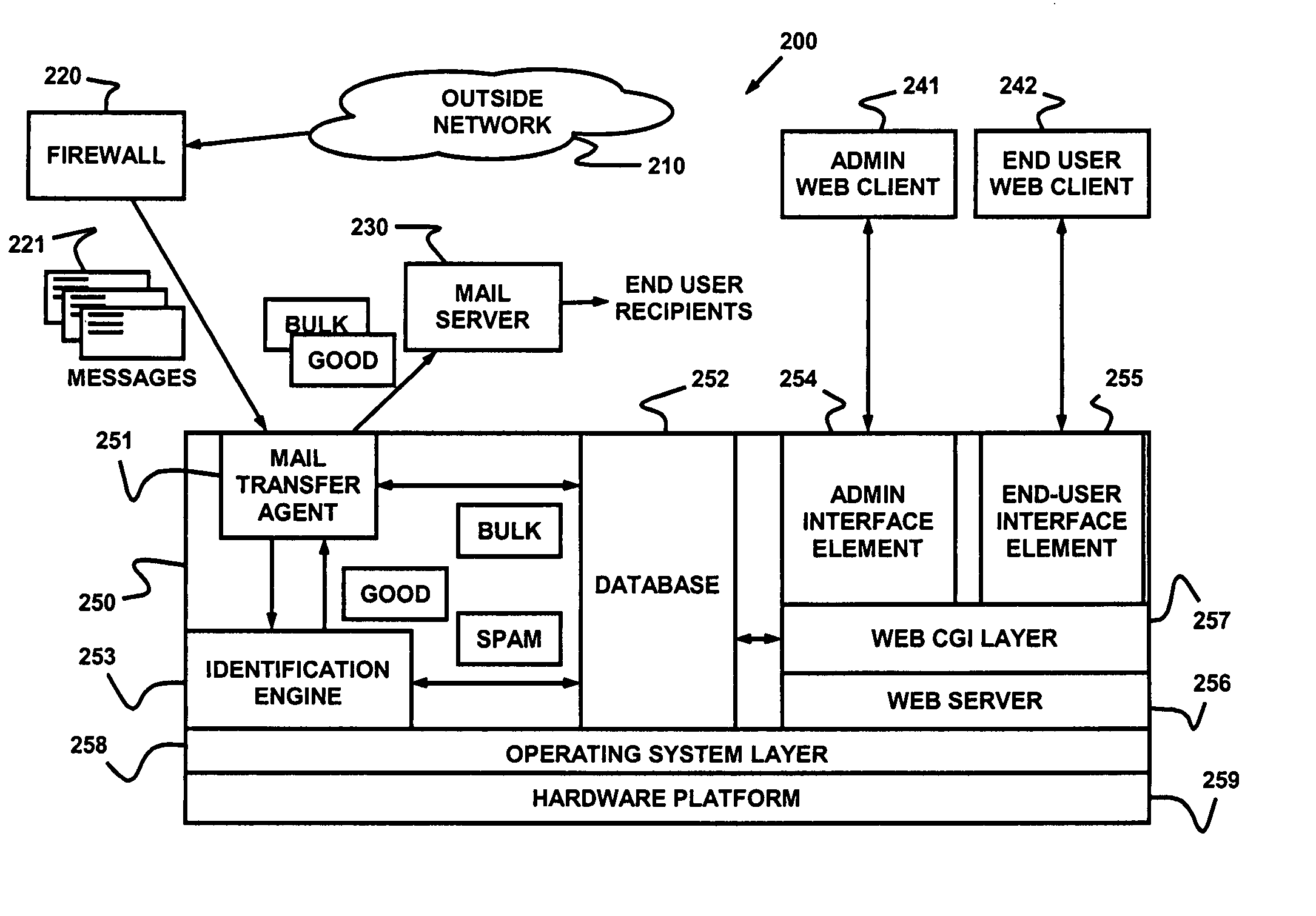Dynamic message filtering
a message filtering and dynamic technology, applied in the field of dynamic message filtering, can solve the problems of unwelcome messages, affecting the quality of messages, and requiring substantial time and effort for recipients to delete, so as to achieve the effect of reducing the number of recipients and reducing the number of messages
- Summary
- Abstract
- Description
- Claims
- Application Information
AI Technical Summary
Benefits of technology
Problems solved by technology
Method used
Image
Examples
Embodiment Construction
[0019] In the description herein, a preferred embodiment of the invention is described, including preferred process steps and data structures. Those skilled in the art would realize, after perusal of this application, that embodiments of the invention might be implemented using a variety of other techniques not specifically described, without undue experimentation or further invention, and that such other techniques would be within the scope and spirit of the invention.
[0020] Lexicography
[0021] The general meaning of each of these following terms is intended to be illustrative and in no way limiting. [0022] The terms “email,”“message” and the phrases “electronic mail” and “electronic message” generally describe any technique by which information is carried (or attempted to be carried) from a sender to a recipient, whether that technique is asynchronous or synchronous, circuit switched or packet switched, human readable or not, intended for individual recipients or not, or broadcas...
PUM
 Login to View More
Login to View More Abstract
Description
Claims
Application Information
 Login to View More
Login to View More - R&D
- Intellectual Property
- Life Sciences
- Materials
- Tech Scout
- Unparalleled Data Quality
- Higher Quality Content
- 60% Fewer Hallucinations
Browse by: Latest US Patents, China's latest patents, Technical Efficacy Thesaurus, Application Domain, Technology Topic, Popular Technical Reports.
© 2025 PatSnap. All rights reserved.Legal|Privacy policy|Modern Slavery Act Transparency Statement|Sitemap|About US| Contact US: help@patsnap.com



